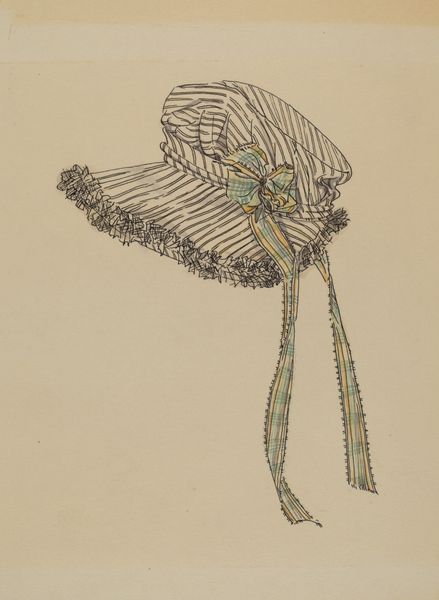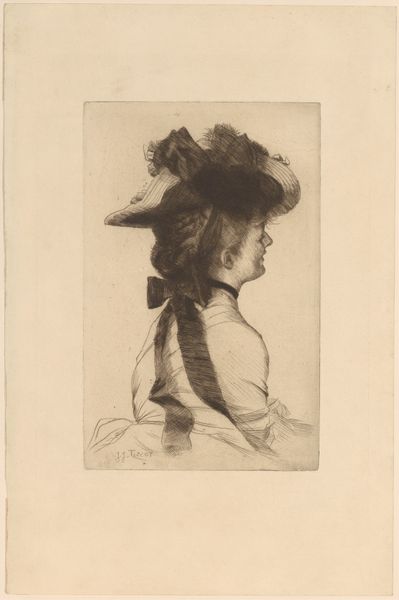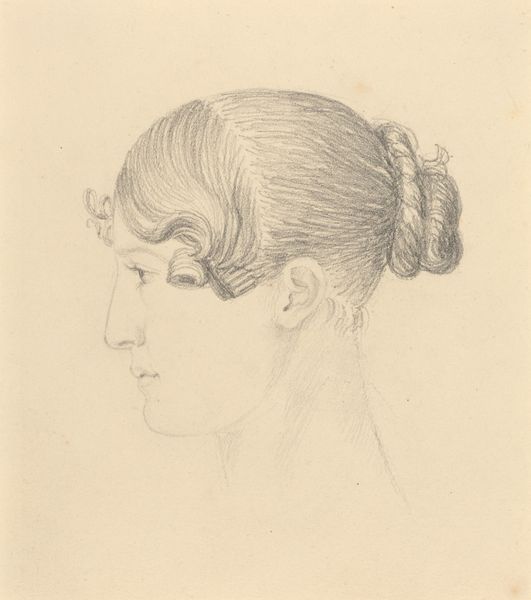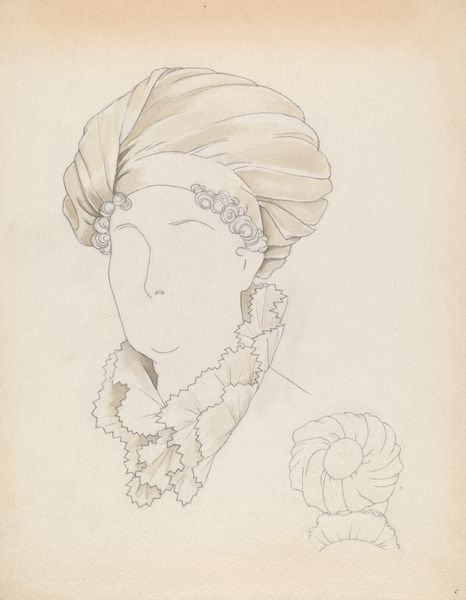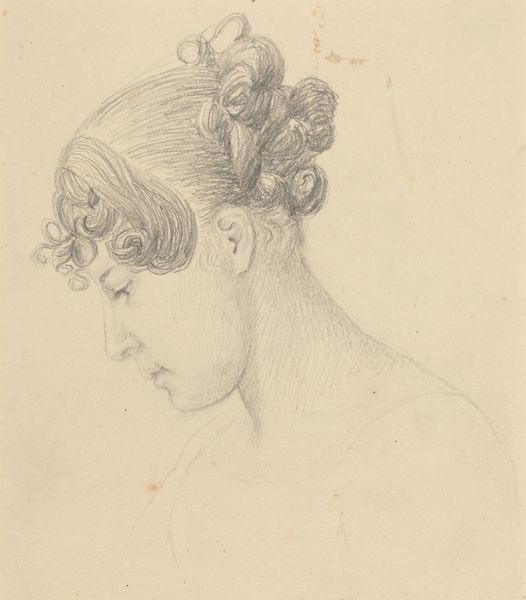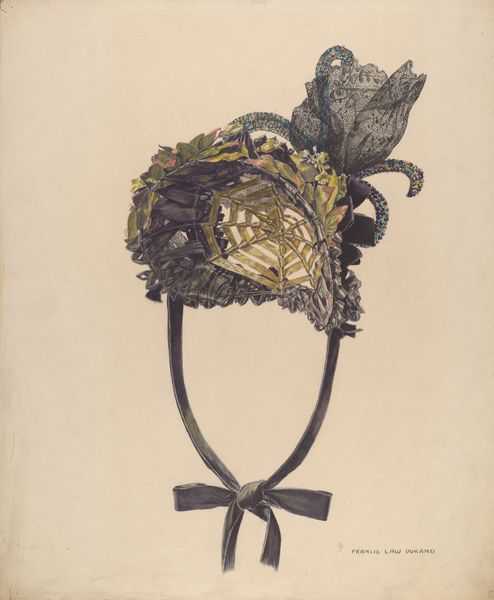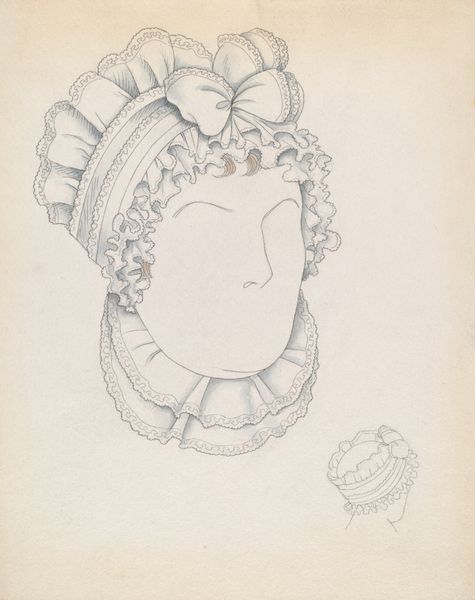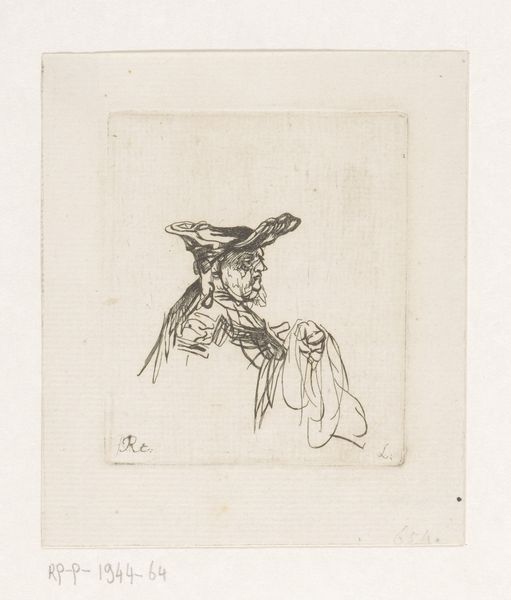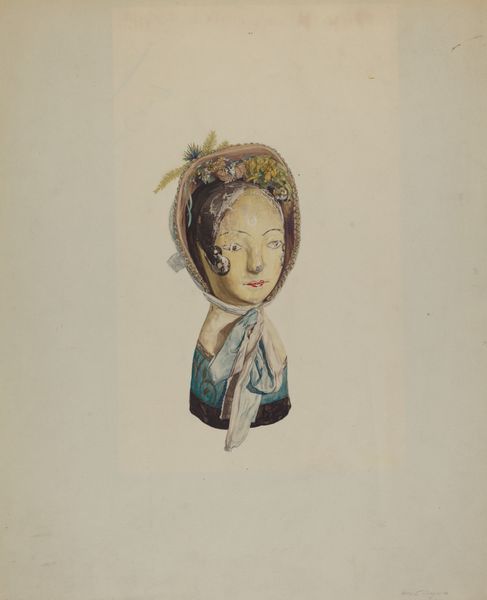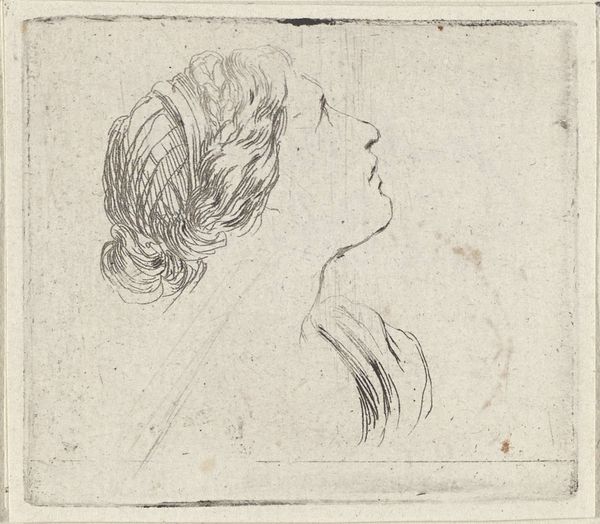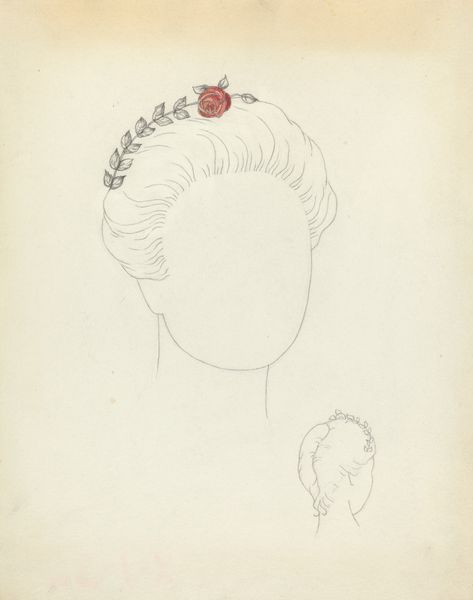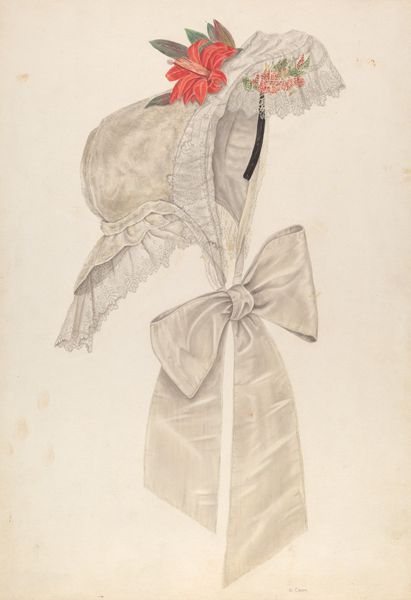
Kopf eines Mädchens mit Haube, von hinten gesehen c. 1771 - 1772
0:00
0:00
Copyright: Public Domain
Editor: So this drawing, "Head of a Girl with a Bonnet, Seen from the Back," made around 1771-1772 by Georg Melchior Kraus, uses graphite and watercolor. The most striking thing is how elaborate her bonnet is, but what I don't quite get is, what was the function of an artwork such as this during the Rococo period? Curator: Good question. Looking at this through a historical lens, we must ask, who was this image made for, and what purpose did it serve within that society? This work belongs to an era where fashion and social status were meticulously crafted and visually communicated. Images like this, particularly studies of details like headwear, reflect an intense interest in appearance and the rituals of social presentation. Editor: So it's a document of the times? Curator: Precisely. Consider how museums have shaped our understanding of art. Drawings like this give us a glimpse into everyday life, things we may not see depicted in history books. Think about how these visual documents reinforce certain narratives and perhaps exclude others. It highlights the meticulous detail afforded to elite fashion. How might interpretations of this drawing differ if it were discovered outside a museum context? Editor: I guess without that institutional validation, we might overlook the social commentary embedded within. The museum really elevates its importance. I’m learning a lot today! Curator: It’s also fascinating to consider how these seemingly simple works contribute to broader understandings of art history and cultural studies. Food for thought, no? Editor: Absolutely. Thanks for pointing that out; I'll keep it in mind.
Comments
No comments
Be the first to comment and join the conversation on the ultimate creative platform.
